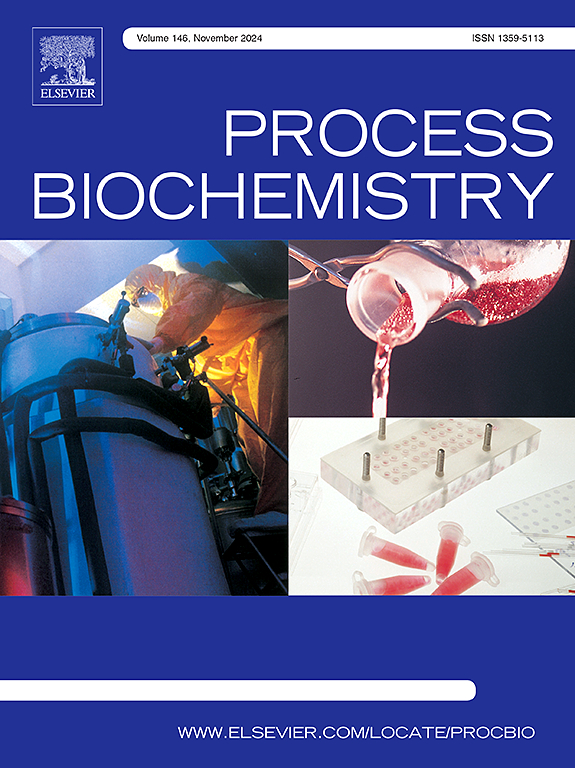释放海洋大型藻类的潜力:生物活性,提取技术和生物精炼途径的综合综述
IF 4
3区 生物学
Q2 BIOCHEMISTRY & MOLECULAR BIOLOGY
引用次数: 0
摘要
海洋巨藻是一种用途广泛的第三代生物质,具有生产色素、稀有糖、硫酸多糖和低聚糖等高价值生物活性化合物的巨大潜力,在制药、营养保健和化妆品等领域的应用日益广泛。这篇综述假设,对已建立的和新兴的生物活性化合物的全面了解,以及提取方法的改进,对于实现基于大型藻类的生物炼制的全部潜力至关重要。与以往的研究不同,本综述独特地整合了未开发的生物活性物质和新兴的提取策略,从而为生物炼制发展提供了路线图。这项工作的贡献在于确定大藻增值的关键瓶颈,并提出为可持续采用量身定制的综合生物炼制战略。到2030年,全球对海洋来源成分的需求预计将达到约160亿美元,本文重点介绍了商业上可行的化合物、生态高效的提取途径以及未来的发展方向,如组学技术的整合、生物过程强化和未充分利用物种的增值。本综述的意义在于强调生态高效的提取方法,特别是那些使用绿色溶剂和工艺强化的方法,最有希望具有可扩展性。此外,稀有糖、色素和硫酸低聚糖在商业上仍未得到充分开发,但具有很高的潜力。解决生物量变化和经济限制问题需要综合生物炼制战略。通过提供一个整体和前瞻性的观点,本综述弥补了现有的知识差距,并为可持续利用海洋大藻的高价值工业应用的未来发展提供了战略见解。本文章由计算机程序翻译,如有差异,请以英文原文为准。
Unlocking the potential of marine macroalgae: A comprehensive review of bioactives, extraction techniques, and biorefinery pathways
Marine macroalgae are versatile third-generation biomass with significant potential to produce high-value bioactive compounds such as pigments, rare sugars, sulfated polysaccharides, and oligosaccharides, which are increasingly relevant for pharmaceutical, nutraceutical, and cosmetic applications. This review hypothesizes that a comprehensive understanding of both well-established and emerging bioactive compounds, along with improvements in extraction methodologies, is essential for realizing the full potential of macroalgae-based biorefineries. Unlike previous studies, this review uniquely consolidates underexplored bioactives and emerging extraction strategies, thereby offering a roadmap for biorefinery development. The contribution of this work lies in identifying critical bottlenecks in macroalgal valorization and presenting integrated biorefinery strategies tailored for sustainable adoption. With the global demand for marine-derived ingredients projected to reach approximately USD 16 billion by 2030, this review highlights commercially viable compounds, eco-efficient extraction routes, and future directions such as the integration of omics technologies, bioprocess intensification, and valorization of underutilized species. The significance of this review lies in highlighting that eco-efficient extraction methods, particularly those using green solvents and process intensification, are the most promising for scalability. Moreover, rare sugars, pigments, and sulfated oligosaccharides remain commercially underexploited yet hold high potential. Addressing biomass variability and economic constraints requires integrated biorefinery strategies. By offering a holistic and forward-looking perspective, this review bridges existing knowledge gaps and provides strategic insights into the future development of sustainable marine macroalgal utilization for high-value industrial applications.
求助全文
通过发布文献求助,成功后即可免费获取论文全文。
去求助
来源期刊

Process Biochemistry
生物-工程:化工
CiteScore
8.30
自引率
4.50%
发文量
374
审稿时长
53 days
期刊介绍:
Process Biochemistry is an application-orientated research journal devoted to reporting advances with originality and novelty, in the science and technology of the processes involving bioactive molecules and living organisms. These processes concern the production of useful metabolites or materials, or the removal of toxic compounds using tools and methods of current biology and engineering. Its main areas of interest include novel bioprocesses and enabling technologies (such as nanobiotechnology, tissue engineering, directed evolution, metabolic engineering, systems biology, and synthetic biology) applicable in food (nutraceutical), healthcare (medical, pharmaceutical, cosmetic), energy (biofuels), environmental, and biorefinery industries and their underlying biological and engineering principles.
 求助内容:
求助内容: 应助结果提醒方式:
应助结果提醒方式:


